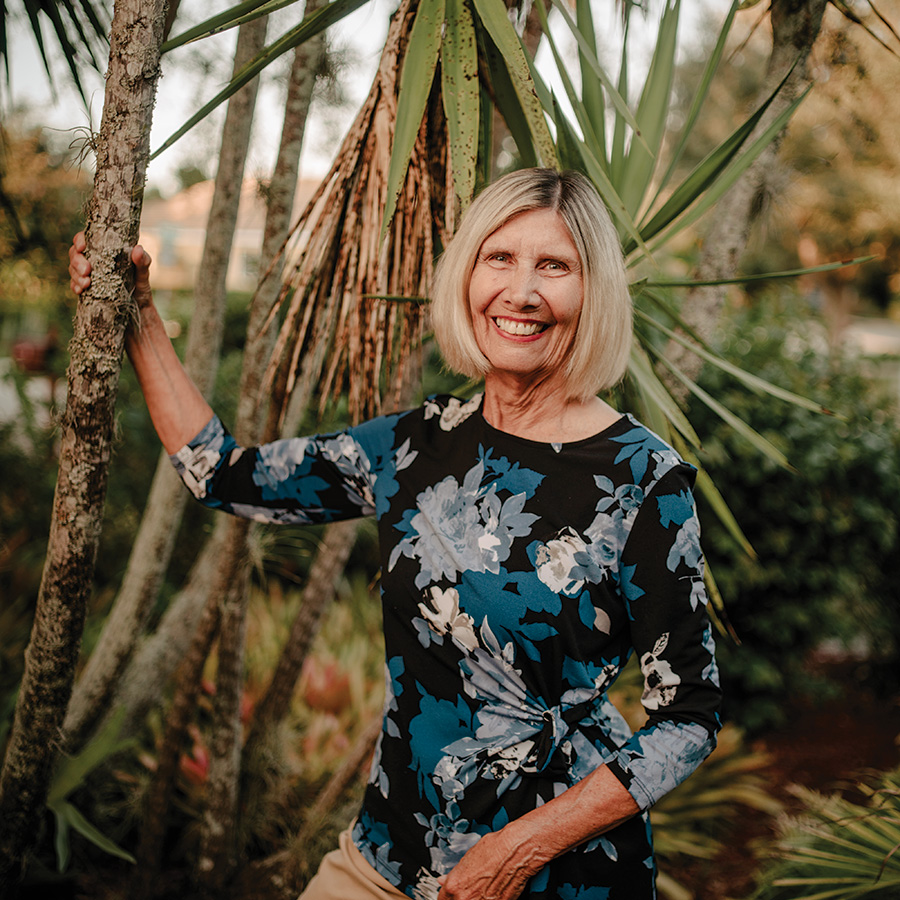During an afternoon walk like any other for Sue King, amidst flower fun facts, mangrove metaphors and a stroll along the Sarasota Bay, she fondly remembers a seventh-grade student asking: “You actually get paid to do this?” “No, I do it for free,” she laughed. “And I’m the lucky one.” Growing up in a New York City suburb and spending summers boating on the Long Island Sound with her parents, a volunteer candy striper and firefighter, Floridian fauna wasn’t exactly common knowledge for Sue King. Yet, she’s spent the last 20 years volunteering with Marie Selby Botanical Gardens, digging into the details of exactly that as a student tour guide.
“That’s where my whole joy has come in,” says King. “I’ve learned as I’ve gone along as much as the kids have.” King, a retired middle school English and History teacher, arrived at Selby after facing the looming and familiar question posed by retirement: Now what? “I wanted to volunteer with my abilities wherever I could,” she thought. The challenge was just finding the right fit, something more than the occasional weekend gig or one-and-done events. A partnership where community and a love of learning flourished. “And it just so happened that Selby Gardens was looking for people in their education department.” A perfect fit, it would seem;however, with no science or plant background, the teacher became the student—an identity our most remarkable teachers never seem to shed.
Training ensued from the ground up, ranging from individual plant names to the greater impact of preservation and conservation, and school was back in session. This time, in an arguably upgraded classroom. “It’s been a wonderful thing for students of all levels to come to the gardens and be able to learn about their natural world,” says King, humbled by the fact that she’s become the substitute for Selby who, for many, is the first to introduce students to the Bay, Mother Earth and our Florida ecosystem. But in the end, the message that Sue King most exemplifies is the importance of a calling, explaining how the key to philanthropy in her eyes is that “the person giving gets back as much as the organization is getting.” Not in a self-satisfying way to say the least, but in a way that allows a retired teacher to continue her career in a new classroom, encouraging growth and joy for all. SRQ









